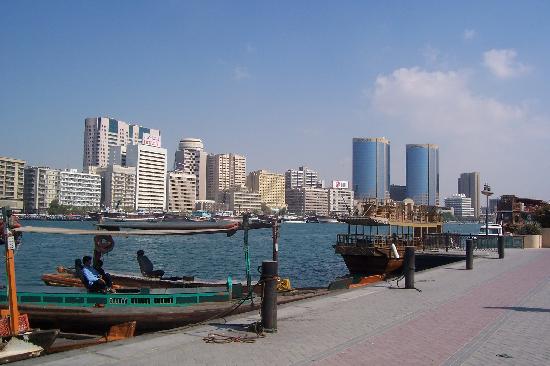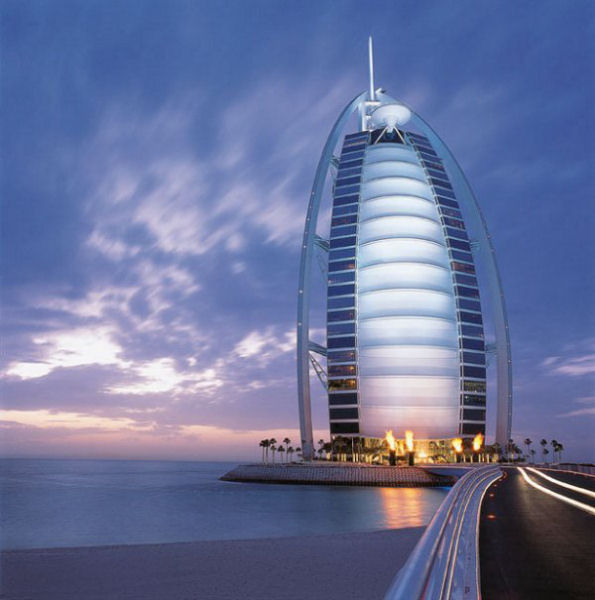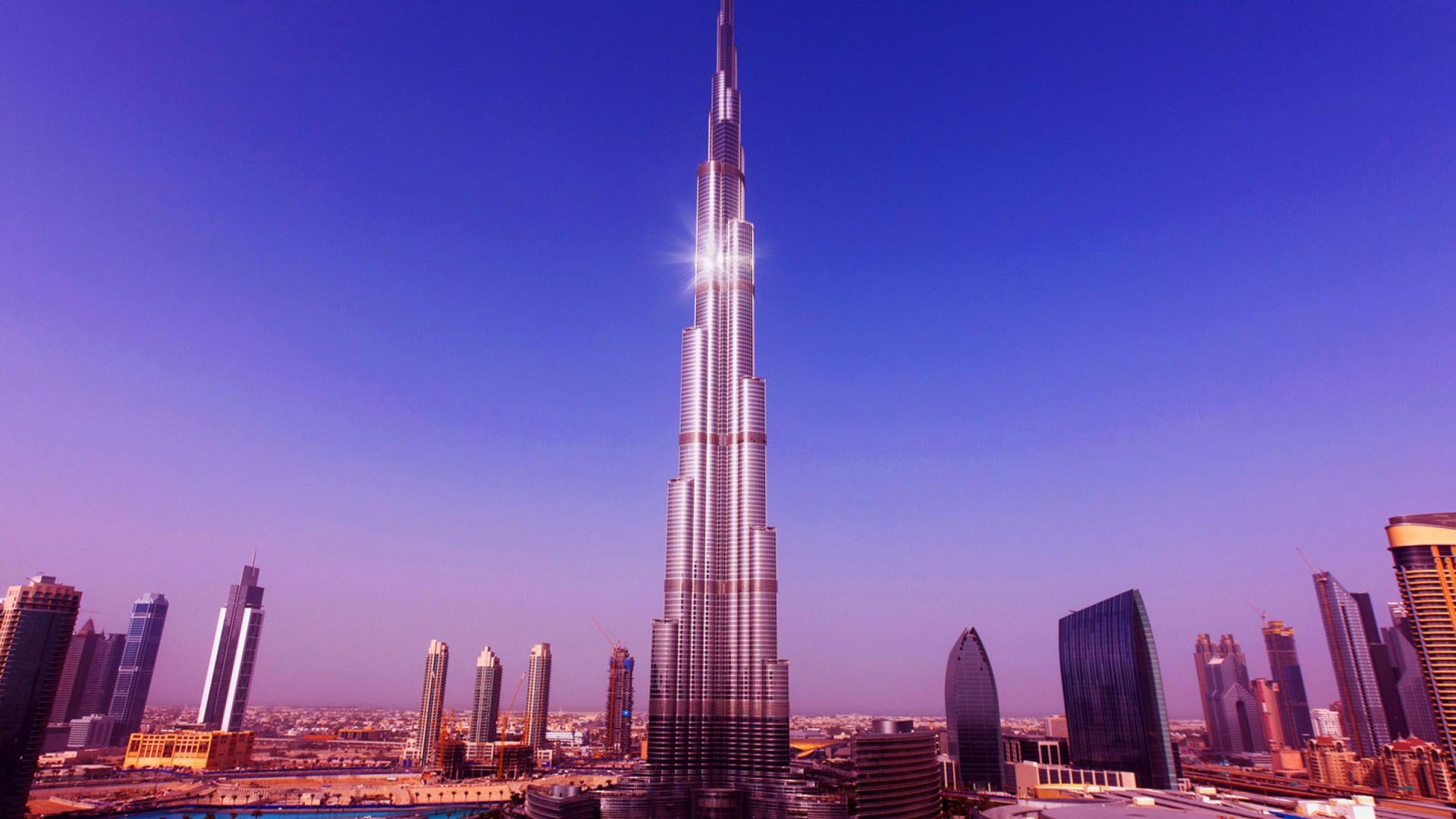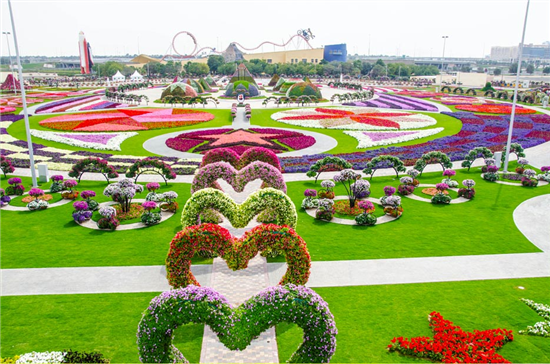United Arab Emirates /Dubai /Dubai
Sight Address : Dubai Creek, Dubai, United Arab Emirates.Edit
Detail InformationEdit
Dubai Creek or Khor Dubai (Arabic: خور دبي, Khawr Dubayy) is a saltwater creek located in Dubai, United Arab Emirates (UAE). It ends at Ras Al Khor Wildlife Sanctuary. Some sources say that the creek extended as far inland as Al Ain, and that the Ancient Greeks called it River Zara. Historically, the creek divided the city into two main sections – Deira and Bur Dubai. It was along the Bur Dubai creek area that members of the Bani Yas tribe first settled in the 19th century, establishing the Al Maktoum dynasty in the city. In the early 20th century, the creek, though incapable then of supporting large scale transportation, served as a minor port for dhows coming as far away as India or time, was also based along the creek, whose warm and shallow waters supported a wide variety of marine life. Dhows used for purposes of fishing were also built on the foreshore of the creek. The importance of the creek as a site of commercial activity was a justification to introduce improvements to allow larger vessels to transit, as well as to facilitate loading and unloading activities. This led, in 1955, to a plan to develop the creek, which involved dredging shallow areas, building of breakwaters, and developing its beach to become a quay suitable for loading and unloading of cargo.[4] The creek was first dredged in 1961 to permit 7 feet (2.1 m) draft vessels to cross through the creek at all times. The creek was dredged again in the 1960s and 1970s so that it could offer anchorage for local and coastal shipping of up to about 500 tons.[6] The dredging opened up the creek to much more continuous traffic of merchandise, including the development of re-export, and gave Dubai an advantage over Sharjah, the other dominant trading centre in the region at the time. Al Maktoum Bridge, the first bridge connecting Bur Dubai and Deira was constructed in 1963. Although the importance of the creek as a port has diminished with the development of the Jebel Ali Port, smaller facilities, such as Port Saeed, continue to exist along the creek, providing porting to traders from the region and the subcontinent. Including the most remarkable buildings alongside the Deira side of the Creek are the Deira Twin Towers, Dubai Creek Tower, Sheraton Dubai Creek, National Bank, and Chamber of Commerce. The creek’s initial inlet into mainland Dubai is along the Deira Corniche and Al Ras areas of eastern Dubai and along the Al Shindagha area of western Dubai. It then progresse south-eastward through the mainland, passing through Port Saeed and Dubai Creek Park. The creek’s natural ending is at the Ras Al Khor Wildlife Sanctuary, 14 kilometres (8.7 mi) from its origin at the Persian Gulf. The traditional form of transport between the eastern and western sections of Dubai via the creek was through abras, which continue to operate in Dubai. In addition, the eastern and western sections are linked via four bridges (Al Maktoum Bridge, Al Garhoud Bridge, Business Bay Crossing, and Floating Bridge) and one tunnel (Al Shindagha Tunnel).
HistoryEdit
N.A.
Must SeeEdit
Attraction.
Visiting TimeEdit
N.A.
Closed OnEdit
N.A.
Best Season to VisitEdit
November to April.
Best Time To VisitEdit
N.A.
Time Required for SightseeingEdit
30 Minutes Minimum.
Ticket Required : No Edit
Individual National Adult : N.A.
Kids : N.A.
Individual Foreigner Adult : N.A.
Kids : N.A.
Still Photo Camera : N.A.
Video Camera : N.A.
Guide Required : No Edit
Approximate cost: N.A.
Dress Code (If Any) : No Edit
Dress Require: N.A.
Restaurants NearbyAdd / Edit
How to ReachEdit
Taxi : Taxi is also easily available here, Most visitors will opt for public taxis from the airport, which are readily available just outside arrivals, which use the meter and start at AED 25. If you can’t find one otherwise, you can attempt to call a taxi at 04-2080808
Bus : The Government of Dubai operates a network of buses linking Dubai city with the capitals of the other six emirates of the UAE. The buses run under the name Emirates Express and operate from various bus terminals in Dubai. Buses operate every 40 minutes from 6.20am from both Dubai’s Al Ghubaibah bus station and Abu Dhabi’s main bus station. The two-hour journey cost AED 25. Frequent buses run between Dubai and Sharjah. There are several different routes and buses depart from various bus stations in Dubai including Al Karama, Gold Souq, Baniyas Square, Jebel Ali and Al Ittihad Square. Fares are at Dh7 .
Train : Dubai Metro is composed of at-grade elevated Type 1, Type 2 and Type 3 (T1, T2 and T3, respectively) underground stations (U) and underground transfer station types (UT). Type 1 is the regular at-grade concourse station, Type 2 is a regular elevated concourse station, and Type 3 is an elevated special track station with an extra track to hold a non operational train. Underground transfer stations will be accommodating both the Red and Green lines for easy transfers. Besides these differences, there are four themes used in the interiors of the stations: earth, water, fire and air. Earth stations have a tan-brown colour effects; water has blue-white colour effects; fire has orange-red colour effects; and the air has green colour effects. Single tickets range from Dh2-8.50, or double that for use of the “Gold” first class carriage. Train run every 3-5 minutes from 5:50 AM to Midnight every day except Thursday and Friday, when services are extended to 5:50 AM to 1 AM and limited to 1 PM to Midnight, respectively. All stations are air-conditioned and there’s a large network of feeder buses.
Air : Dubai International Airport (DXB), which is located about 2.5 miles southeast of Dubai, links the emirate to over 200 world destinations by 100 airlines operating about 5,600 flights every week. Terminal 1 of Dubai International Airport serves as a base for international flights while Terminal 3 exclusively caters for Emirates. Terminal 2 on the other hand, is mainly used by smaller airlines operating to Iran, Pakistan and Afghanistan. India can avail flight services from metropolitan cities like Delhi, Mumbai, Kolkata, Chennai, Ahmedabad and Bangalore. Besides Emirates, Jet Airways, Air India, Thai Airways and Indian Airlines are some of the major airlines serving travellers flying to Dubai from India. Most visitors will opt for public taxis from the airport, which are readily available just outside arrivals, which use the meter and start at Dhs 25. Taxis are on the left when you come out of terminal 1.
Airport telephone number: +971 (0) 4 224 5555
Others : By Boat : An easier way of crossing the Dubai Creek is by abra, essentially a small ferry. Abra stations are located along the Creek on both the Bur Dubai and Deira sides, and the system of filling the boats is remarkably efficient. The cross-river trip costs 1 Dirham (AED 1) per passenger, payable to the driver after the boat has left the station, and affords a very picturesque view of the city (not to be missed). Abras set off very regularly, and the service is available round-the-clock.
By Waterbus : The Waterbus is another option for tourists who want to go by boat but avoid the abra crowd (or the heat). It is a part of Dubai’s public transport system, so again a Red ticket, or any Nol card is required for the journey. Can be purchased at the waterbus station. The waterbus also features a ‘tourist route’ round trip – while it is convenient, it can get quite expensive (Dh50 for an adult, Dh25 for a child).
By Car : There are a countless number of Rent-A-Cars that will provide a mode of transportation for very cheap rates and very little paperwork. An International Driving Permit is not necessarily required, but hire companies may not rent a car without one. Some agencies will hire out cars complete with drivers. Visitors taking advantage of this option will need to make certain that their driver knows his way around as many do not.
Things to CarryEdit
- Carry camera.
Safety / WarningEdit
HelplineEdit
- Police – 999 / 2292222
- Fire Department – 997
- Ambulance – 999



